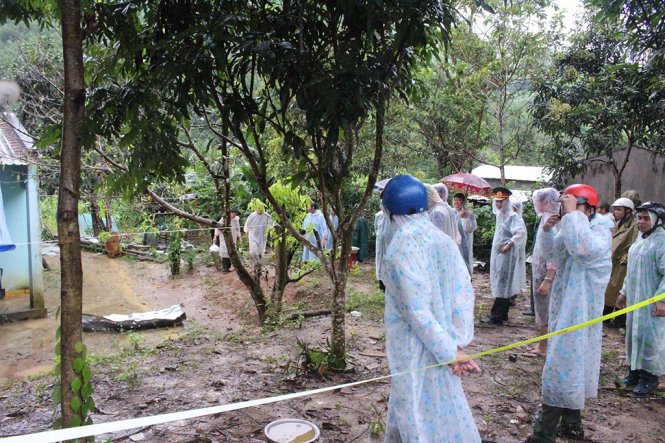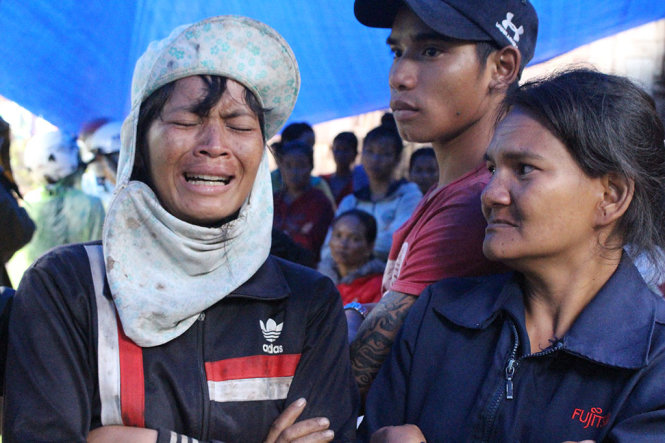Six members of a family were killed, while another was critically injured, during an attempt to cut open an artillery shell in a remote village in the south-central province of Khanh Hoa on Friday.
At around 9:00 am, people in the Ta Luong village in Khanh Son District were shocked by a deafening explosion and a column of black smoke was seen from afar.
When villagers flocked to the scene, what they found were several body parts scattered around, and a big hammer weighing about 10kg.
Dang Van Minh, head of the Khanh Son military unit, confirmed to Tuoi Tre (Youth) newspaper later the same day that six people of a family were killed in the incident, when they were attempting to cut a 105mm artillery shell.
“The shell had been cut into two halves and the victims were apparently attempting to cut open its nose cone for gunpowder,” Minh added.
Seven people were at the scene when the projectile exploded, but only one of them, 55-year-old Bo Bo Suong, survived the blast and is now treated at the Khanh Hoa General Hospital.
The victims include three of Suong’s children, his two grandchildren and the father-in-law of one of his sons.
The family had previously come across two other shells when working on their farms, according to a villager.
“The exploded shell was the third they had found,” he said.
 |
| People are seen at the scene of an artillery projectile explosion in Khanh Hoa, south-central Vietnam, August 18, 2017. |
Minh, the military officer, said Khanh Son is a mountainous area and used to be a base for Vietnamese soldiers during the American war.
“We have repeatedly called on locals to hand over any wartime weaponries they may find, but some poverty-stricken families, with poor knowledge and awareness, still try to cut the projectiles for scrap metal and gunpowder,” Minh said.
Fifty thousand Vietnamese civilians have lost their lives and more than 60,000 others have been injured in accidents related to unexploded ordnances across the country since the war ended in 1975.
According to statistics, unexploded ordnances exist in all 63 provinces and municipalities of Vietnam, with the most heavily affected areas being Quang Tri, Quang Binh, Thua Thien – Hue, Da Nang, Quang Ngai, Hai Duong, Nghe An, Ha Tinh, Ca Mau, Soc Trang, and Dong Thap.
Approximately 6.1 million hectares of mainland Vietnam still contain explosive remnants, with the cost of their safe removal estimated to be millions of U.S. dollars.
Like us on Facebook or follow us on Twitter to get the latest news about Vietnam!






















































